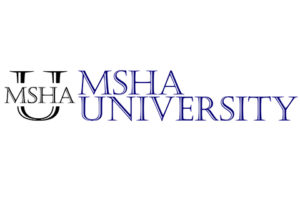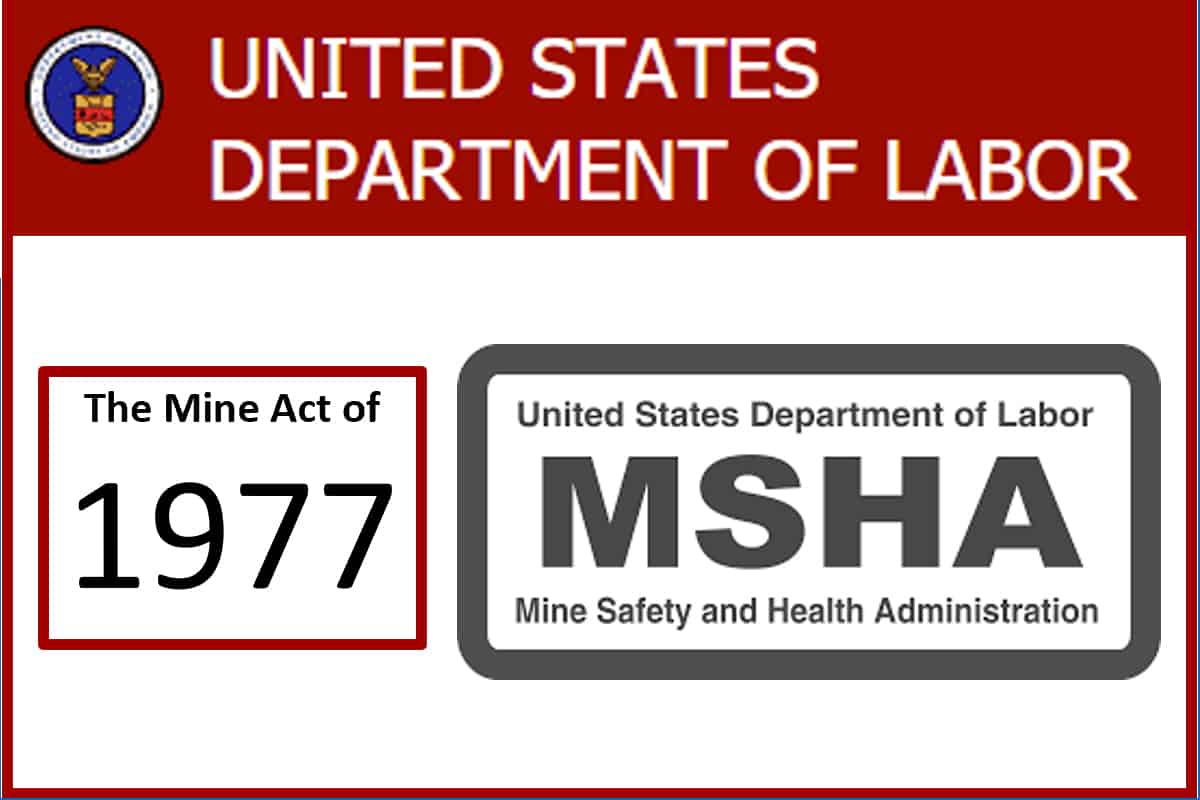If you’re interested in learning about MSHA, you may be new to the mining industry. But if you’ve ever worked in an industrial environment or at a construction site, you’re probably familiar with OSHA, the Occupational Safety and Health Administration. Well, MSHA operates in a similar way as OSHA, but with a focus on overseeing and enforcing safety and health for the mining industry in the U.S.
So, what is MSHA and when did it start? As part of the U.S. Department of Labor, the Mine Safety and Health Administration, commonly referred to as “MSHA,” is a division of the federal government that “works to prevent death, illness, and injury from mining and promote safe and healthful workplaces for U.S. miners.” Its mission is to “carry out the provisions of the Federal Mine Safety and Health Act of 1977 (Mine Act) as amended by the Mine Improvement and New Emergency Response (MINER) Act of 2006.”
Understanding what the organization does and where it came from is just the tip of the iceberg. There’s a lot more about MSHA and its origins in the Mine Act that are worth knowing. So, here are some important facts about the Mine Act and MSHA certifications.
What Is The Mine Act?
The Mine Act (the Federal Mine Safety and Health Act of 1977) is the U.S. federal legislation that defines the operations and authority of MSHA. In fact, the creation of the Mine Safety and Health Administration was a direct result of the passage of the Mine Act in 1977.
Amending the 1969 Coal Act, key components of the Mine Act include:
- Four annual inspections required at all underground mines
- Two annual inspections required at all surface mines
- Strengthened and expanded rights for miners
- Enhanced protection of miners from retaliation for exercising such rights
- Mandatory miner training provisions established
- Mine rescue teams required for all underground mines
With the passage of the Mine Act and the creation of MSHA, miner fatalities dropped significantly. In fact, as a direct result of MSHA’s efforts, miner deaths decreased by 50% from 134 in 1977 to 67 in 1987. Miner fatalities continued to decrease on average to a record low of 13 deaths in 2017.
What’s The Difference Between OSHA and MSHA?
While both OSHA and MSHA are divisions within the Department of Labor, the two organizations are different.
OSHA’s origins date back to the Occupations Safety and Health Act of 1970, which created the organization “to ensure safe and healthful working conditions for working men and women by setting and enforcing standards and by providing training, outreach, education and assistance.”
However, the lines of authority and oversight for occupational safety and health can get a bit blurry when it comes to mining. While MSHA’s authority and jurisdiction for inspection specifically focus on mining, OSHA may also oversee and enforce any areas not covered by MSHA.
So, even though there are distinct differences, the Department of Labor effectively ensures that all workers are protected with some overlap of these two organizations.
What Is An MSHA Certification?
MSHA “certification” is a bit of a tricky term. In most cases, people ask that question related to successfully completing a specialized type of training to receive a certification of some kind. MSHA does this a bit differently. Here are the two main examples that best illustrate how to interpret the idea of an MSHA certification:
- Miner and Independent Contractor Training – MSHA outlines training and retraining of miners and contractors. When those training requirements are met, the mine operator provides the miner/contractor with a record of training that documents their successful completion of the training. They don’t receive an actual “certification” in the same way that they would for an OSHA 10 card. The MSHA document isn’t intended as a certification that an individual effectively owns and carries with them to other employers. It’s primarily intended to verify that the employer is adhering to MSHA’s training requirements.
- MSHA-Approved Trainer Training – For Part 48 underground mining, MSHA requires that training be provided by MSHA-approved trainers. An individual must apply and be accepted into an MSHA training program designed to train them as MSHA instructors. Upon successful completion of that program, that person becomes an MSHA-approved instructor, effectively carrying that designation with them, regardless of who their employer is. So, this type of “MSHA certification” is much more in alignment with the conventional use of the term, “certification.”
How Long Does MSHA Certification Last?
In terms of miner and independent contractor training, the completion of compliant training must be done as a new miner (and contractor) prior to beginning work at the mine followed up with annual refresher training every year. This is the case for both MSHA Part 46 surface miner and Part 48 underground miner training.
For MSHA-approved Part 48 trainers, their certification as trainers doesn’t have a time limit or renewal requirement. But they must maintain their approved status by instructing at least one course every 24 months.
Additional Questions
Are Miners Covered By OSHA?
Yes, OSHA effectively covers miners in any area that may not be covered or enforced by MSHA. And most MSHA safety standards for procedures and equipment use are either very similar or identical between the two organizations.
What’s The Difference Between MSHA Part 46 and Part 48?
Part 46 and Part 48 are sections within Title 30 of the Code of Federal Regulations (CFR) that define the training and documentation requirements for miners and independent mining contractors in the U.S.
- Part 46 (Surface: Non-Metal / Non-Coal) – MSHA defines the scope of Part 46 as providing “…the mandatory requirements for training and retraining miners and other persons at shell dredging, sand, gravel, surface stone, surface clay, colloidal phosphate, and surface limestone mines.”
- Part 48 A & B (Underground & Surface Areas of Underground Operations) – MSHA defines the scope of Part 48 as providing “…the mandatory requirements for submitting and obtaining approval of programs for training and retraining miners working in underground mines. Requirements regarding compensation for training and retraining are also included. The requirements for training and retraining miners working at surface mines and surface areas of underground mines are set forth in subpart B of this part.”

